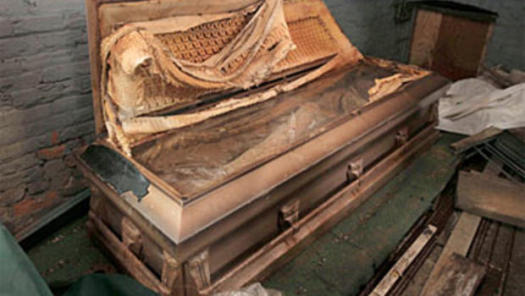
Writing for Smithsonian Magazine, Abby Callard is reporting that the family of murdered teen Emmett Till has donated the casket in which he was buried to the Smithsonian’s National Museum of African American History and Culture.
In 1955, Emmett Till, a 14-year-old African-American visiting Mississippi from Chicago, was murdered after allegedly whistling at a white woman. His mother, Mamie Till (later Mamie Till Mobley), insisted that her son be displayed in a glass-topped casket, so the world could see his beaten body. Till’s death went unpunished until 2005, literally after decades of fighting for justice, his body was exhumed by the State of Mississippi as evidence in Till’s murder and the casket was not allowed to be put back into the ground according to Mississippi law.

In an interview with Till’s cousin, Simeon Wright, 67, who was with Till the night he was kidnapped and murdered, he explains why the family decided to donate the casket to the Smithsonian. Wright stated:
Donating it to the Smithsonian was beyond our wildest dreams. We had no idea that it would go that high. We wanted to preserve it, we wanted to donate it to a civil rights museum. Smithsonian, I mean that’s the top of the line. It didn’t even cross our mind that it would go there, but when they expressed an interested in it, we were overjoyed. I mean, people are going to come from all over the world. And they’re going to view this casket, and they’re going to ask questions. ‘What’s the purpose of it?’ And then their mothers or fathers or a curator, whoever is leading them through the museum, they’ll begin to explain to them the story, what happened to Emmett. What he did in Mississippi and how it cost him his life. And how a racist jury knew that these men were guilty, but then they go free. They’ll get a chance to hear the story, then they’ll be able to… perhaps, a lot of these young kids perhaps, they will dedicate their lives to law enforcement or something like that. They will go out and do their best to help the little guys that can’t help themselves. Because in Mississippi, in 1955, we had no one to help us, not even the law enforcement. No one to help us. I hope that this will inspire our younger generation to be helpers to one another.
Read more at Smithsonianmag.com.
Like The Burton Wire on Facebook. Follow us on Twitter @TheBurtonWire.








